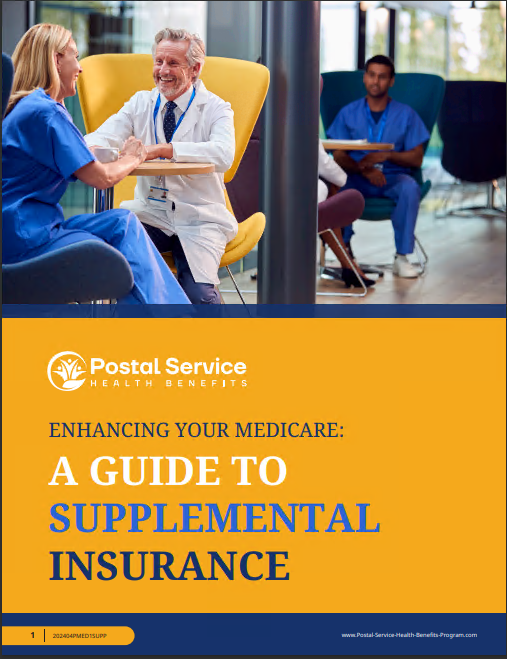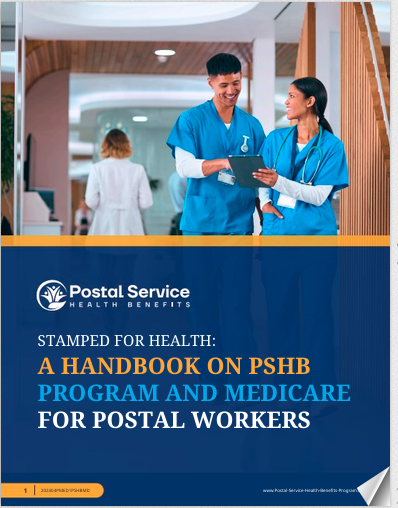Key Takeaways
-
Understanding premiums, deductibles, copays, and coinsurance helps you plan your healthcare expenses under the Postal Service Health Benefits (PSHB) program.
-
PSHB plans vary in cost and coverage, so evaluating each component ensures you choose the best option for your needs and avoid unexpected expenses.
Breaking Down the Basics: What You Pay and When
Your PSHB plan isn’t just about the premium you pay each month. It also includes deductibles, copays, and coinsurance, each of which affects your total healthcare costs. Knowing how these elements work together can help you budget effectively for medical expenses throughout the year and reduce financial stress when you need care.
Premiums: Your Monthly Healthcare Bill
A premium is the fixed amount you pay each month to keep your PSHB plan active. While the government covers a portion of this cost, you are responsible for the remaining amount, which varies depending on your coverage level:
-
Self Only
-
Self Plus One
-
Self and Family
Higher coverage levels generally come with higher premiums, but they also provide broader coverage for your spouse and dependents. If you are transitioning from an active postal worker to a retiree, your premium costs may shift, so reviewing them annually is crucial.
How Premiums Affect Your Total Healthcare Costs
It’s easy to focus on just the monthly premium when choosing a plan, but a lower premium doesn’t always mean lower total costs. A plan with a low premium may have higher deductibles, copays, or coinsurance, leading to increased out-of-pocket expenses when you need medical care. Conversely, a higher-premium plan may cover more services upfront, resulting in lower costs at the point of care.
Additionally, some plans offer premium reductions for enrollees who meet specific criteria, such as participating in wellness programs or enrolling in both Medicare and PSHB. Understanding how your premium interacts with the other cost-sharing elements ensures you choose the most cost-effective plan for your needs.
Deductibles: The First Hurdle Before Coverage Kicks In
Your deductible is the amount you must pay out of pocket before your health plan starts sharing costs for covered services. Deductibles differ based on the plan you choose:
-
Low-deductible plans require higher premiums but reduce upfront costs when receiving care.
-
High-deductible plans have lower premiums but require you to pay more out of pocket before cost-sharing begins.
Many PSHB plans offer different deductible structures, so reviewing the specific amounts each year is essential. Understanding your deductible is especially important if you anticipate significant medical expenses.
How to Minimize Deductible Expenses
-
Plan ahead: If you know you will need surgery or ongoing treatment, a plan with a lower deductible may be the better option.
-
Use preventive care: Many preventive services are covered before you meet your deductible.
-
Combine with a Health Savings Account (HSA) or Flexible Spending Account (FSA): If eligible, these tax-advantaged accounts can help you cover deductible expenses.
-
Take advantage of employer incentives: Some plans offer deductible credits for participating in health and wellness programs.
Copays: Fixed Costs for Doctor Visits and Medications
A copay is a set dollar amount you pay when receiving certain healthcare services, such as:
-
$20-$40 for a primary care visit
-
$30-$60 for a specialist visit
-
$50-$75 for urgent care
-
$100-$150 for emergency room visits
Copays make it easier to predict your medical expenses, especially for routine visits. Some PSHB plans may offer lower copays for telehealth services, making virtual visits a cost-effective option.
Coinsurance: Your Share of Medical Costs After Deductibles
Unlike copays, coinsurance is a percentage of the cost you must pay after meeting your deductible. Common PSHB coinsurance rates include:
-
10%-30% for in-network services
-
40%-50% for out-of-network services
Higher coinsurance means a greater out-of-pocket cost, so staying in-network can help control expenses. Be sure to verify whether specialist visits, lab work, or medical procedures require coinsurance instead of a flat copay.
What’s Covered? Understanding Cost-Sharing Under PSHB
PSHB plans cover a broad range of healthcare services, but cost-sharing can vary. Here’s what to expect:
Preventive Care: Often Covered at No Additional Cost
Most PSHB plans cover preventive services without requiring a copay or deductible, including:
-
Annual checkups
-
Vaccinations
-
Cancer screenings
-
Chronic disease screenings (e.g., diabetes, hypertension)
However, some services may require cost-sharing, so check your plan details.
Prescription Drug Costs: What You Need to Know
Prescription drug coverage under PSHB includes tiered pricing, meaning costs depend on the medication category:
-
Generic drugs: Lowest copays
-
Preferred brand-name drugs: Moderate copays or coinsurance
-
Non-preferred drugs: Higher out-of-pocket costs
-
Specialty drugs: Highest cost-sharing
Some plans also offer a Medicare Part D prescription drug benefit, which can impact costs for those enrolled in Medicare and PSHB.
How to Lower Prescription Costs
-
Use generics whenever possible.
-
Check mail-order options for savings on long-term prescriptions.
-
Review formulary lists to confirm drug coverage before filling a prescription.
-
Compare pharmacy networks: Some plans offer discounts at preferred pharmacy locations.
Emergency and Hospital Care: Higher Out-of-Pocket Costs
If you require hospitalization or emergency care, costs vary based on your plan’s coverage:
-
Emergency room visits: Higher copays, often $100-$150
-
Inpatient hospital stays: Coinsurance applies, typically 10%-30% for in-network services
-
Out-of-network hospital stays: Higher out-of-pocket costs, sometimes up to 50% coinsurance
How Medicare Affects Your PSHB Costs
If you are 65 or older, you may be eligible for Medicare, which can help lower your PSHB out-of-pocket costs. Here’s how they coordinate:
-
Medicare Part A (Hospital Insurance) covers inpatient hospital care.
-
Medicare Part B (Medical Insurance) helps with doctor visits and outpatient services.
-
Many PSHB plans waive deductibles and lower copays when you have both Medicare Part B and PSHB.
If you’re retiring soon, understanding how Medicare works with PSHB can help reduce your overall healthcare expenses.
Making the Right Choice for Your Budget and Health
Navigating PSHB premiums, deductibles, copays, and coinsurance can feel overwhelming, but understanding these costs helps you make informed decisions. Whether you’re an active postal worker or a retiree, choosing the right plan ensures you get the care you need without unnecessary financial stress.
For professional guidance on choosing the right PSHB plan, get in touch with a licensed agent listed on this website who can help assess your healthcare needs and budget.







